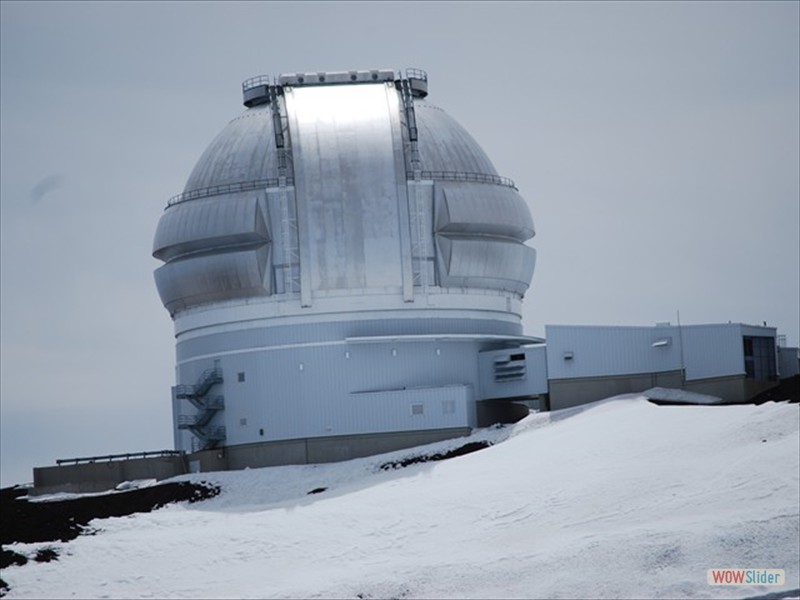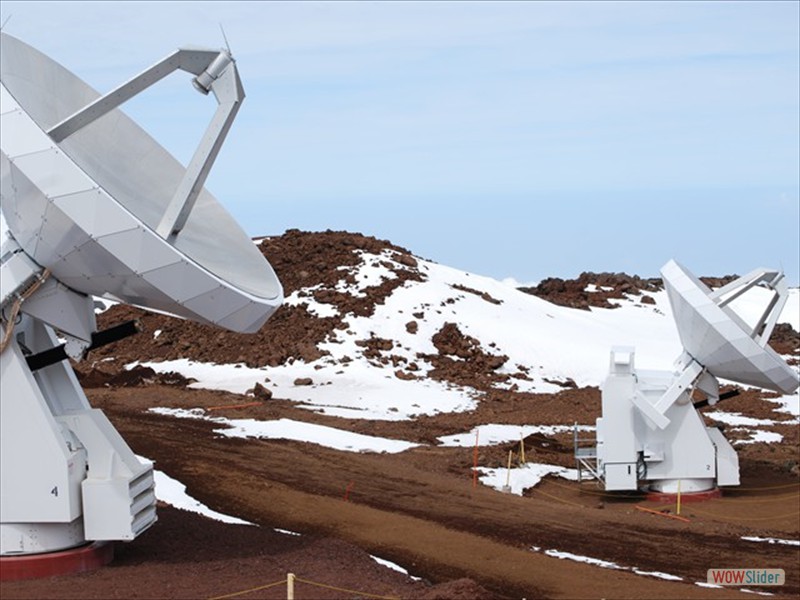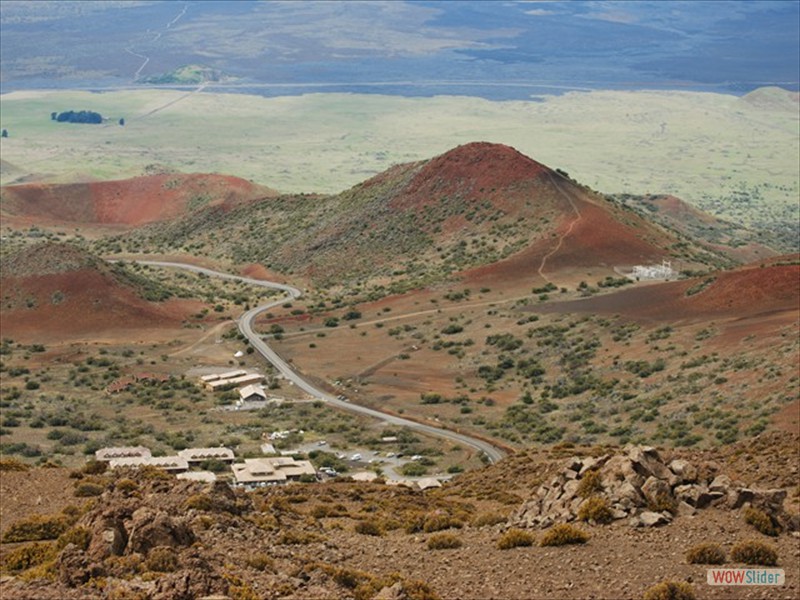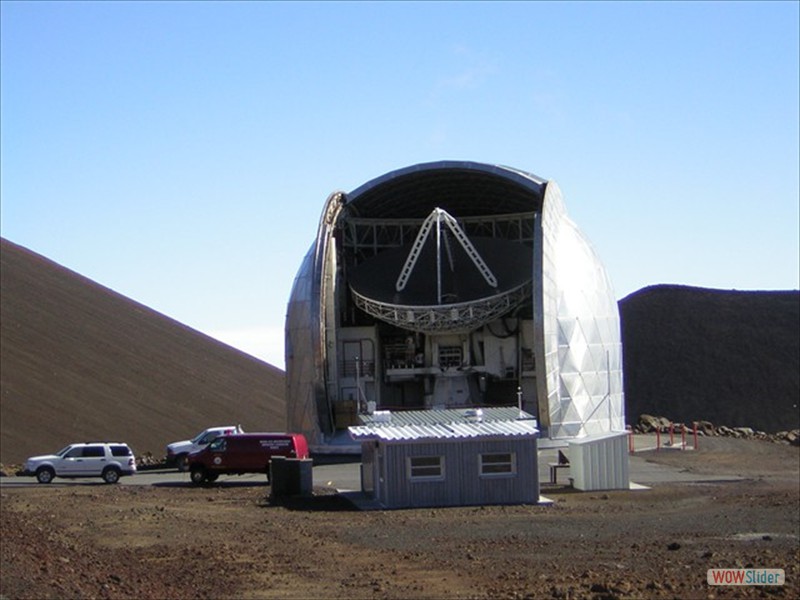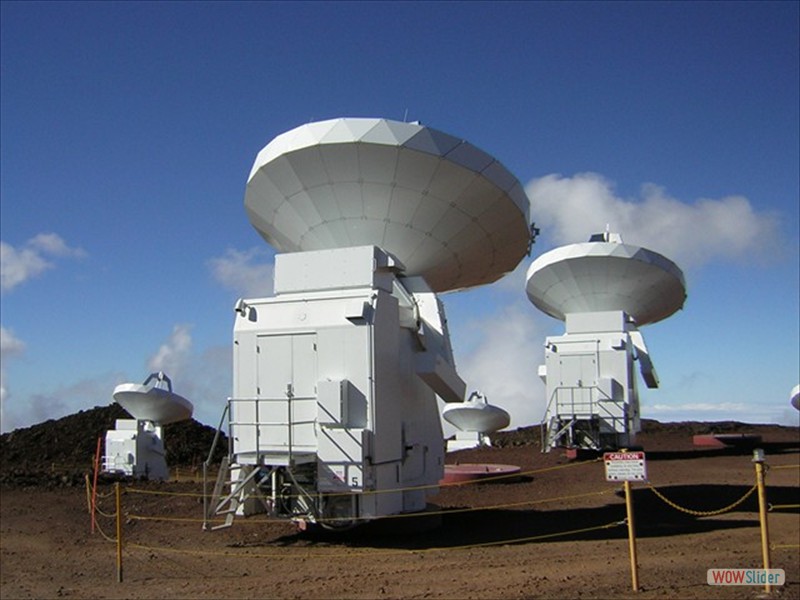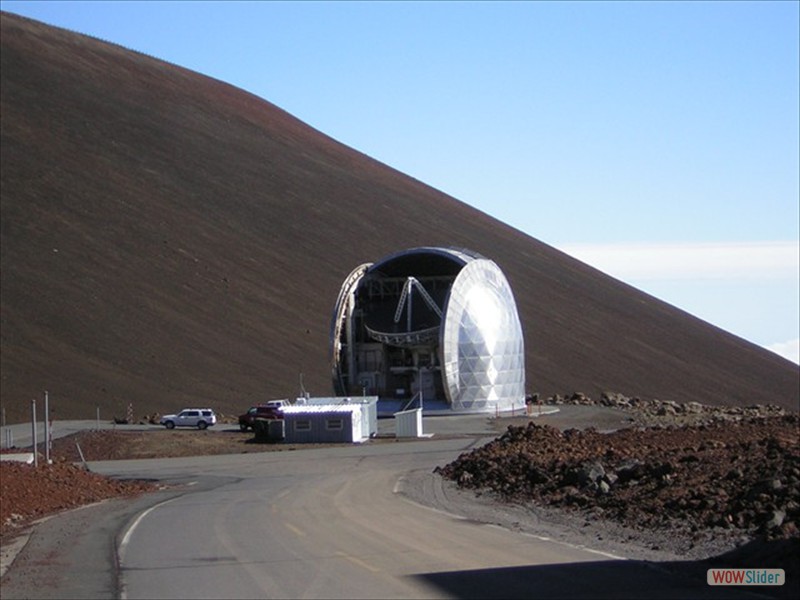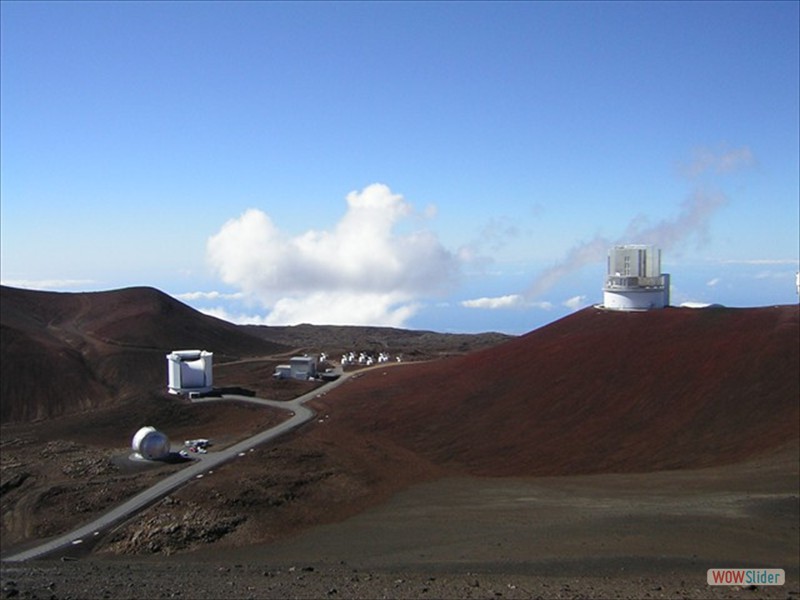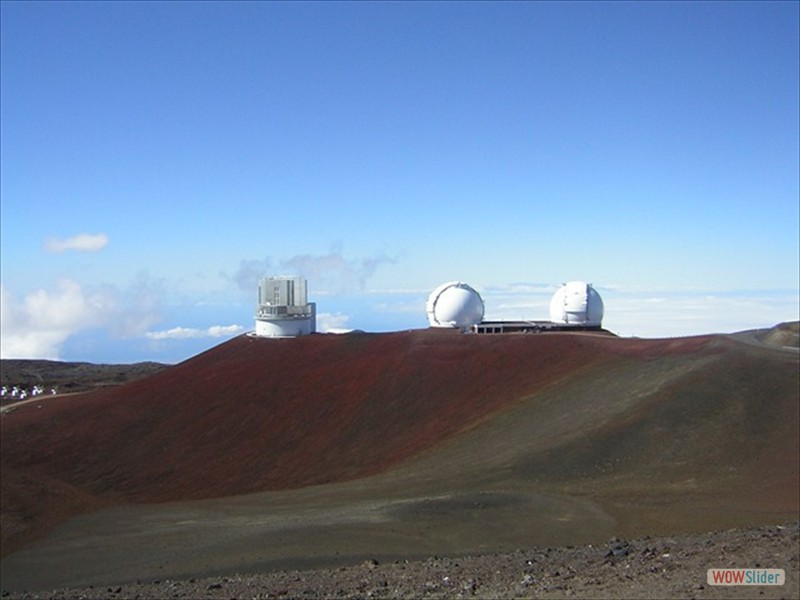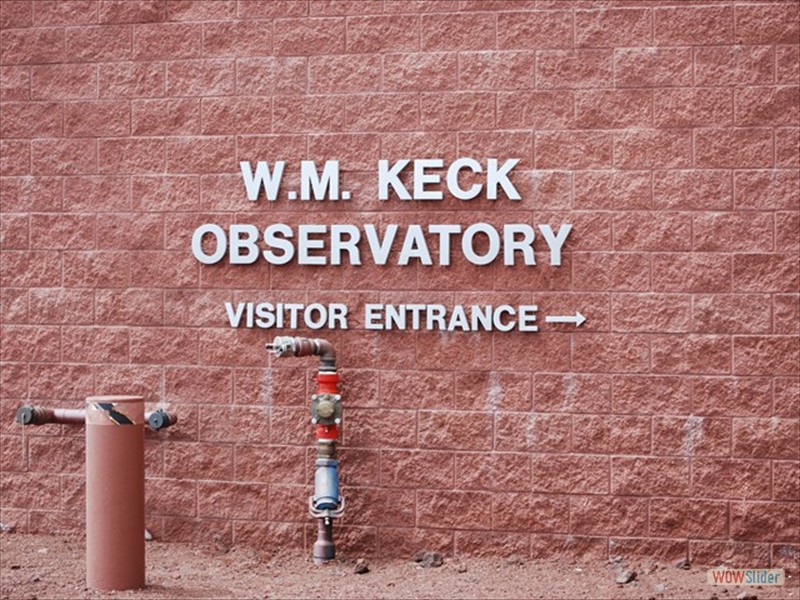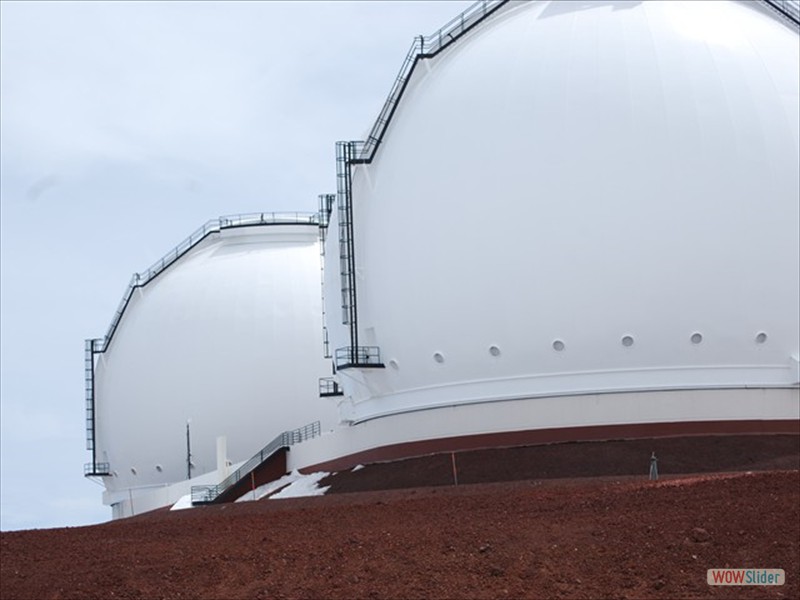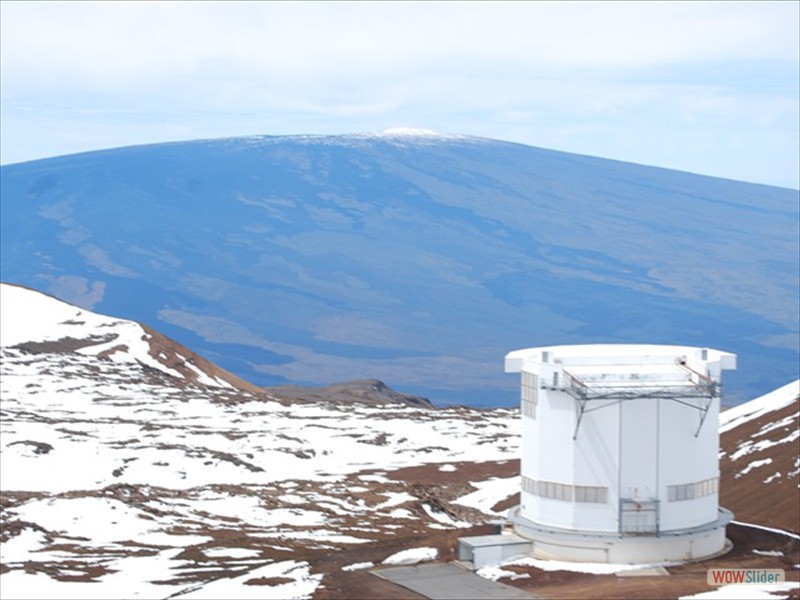Mauna Kea Observatories

Visiting Mauna Kea Observatories and Mauna Kea Summit 13,796 feet (4,200 m)
Aloha Vacation Cottages are at a convenient location for your visit to Mauna Kea Summit. You drive through Waimea town, take Hwy 190 in the direction to Kona. After a short drive, you will reach Saddle Rd, which leads to Mauna Kea access Rd. Now, car rental companies allow Saddle Rd. usage. Same applies to any other paved roads on the Big Island. It will take you about 1 – 1.5 hr driving time from our vacation cottages to the Visitor Center.
If you would like to visit Mauna Kea Observatory, we recommend that you begin at the Visitor Information Station of the Onizuka Center for International Astronomy at the 10,000-foot level on the Mauna Kea access road, about 20 minutes from the turnoff from the Saddle Road. At the center you can learn about the mountain, the telescopes, and the Universe, buy souvenirs and view the stars after dark through the our portable telescopes while adjusting your body to the higher elevation before driving to Mauna Kea summit.
Summit Tours are held on Saturday and Sunday from 1:00 to 5:00 PM from Visitor Information Station
Find more options to Mauna Kea Summit and Stars
Stargazing Programs are held every night from 6:00 to 10:00 PM at the Visitor Information Station
Driving to Mauna Kea Summit
When driving to the 14,000-foot summit of Mauna Kea to view the various observatories, you need to be aware that:
*Ordinary vehicles cannot cope with the steep, unpaved road to the summit; you will need to obtain a TRUE four-wheel drive vehicle with LOW range, or take a commercial tour: Mauna Kea Summit and Stars.
NOTE: Many rental companies do not allow their vehicles on the summit even if they are 4-wheel drive. You would potentially be responsible for all towing charges and repairs if anything happens to your vehicle.
*There are no opportunities to “look through” the telescopes at the summit. Visitors are not allowed at the summit after dark.
*The road up the mountain can be dangerous, particularly in bad weather.
*The high altitude of the observatory carries serious health risks and can impair physical and mental activity.
*Only one observatory (Keck) has a visitors’ gallery from which the telescope may be viewed during the day.
The road from the Visitor Information Station (9000 ft)
up to the Observatories
Location of Mauna Kea
Mauna Kea is situated on the Big Island of Hawaii. It can be reached from Route 20, the narrow and winding Saddle Road, so named because it runs between the two major volcanic mountains, Mauna Loa and Mauna Kea, at an elevation of 2,000 m (6,600 ft). A paved road leaves the Saddle Road at Mile 28 and winds its way up to the lower slopes of Mauna Kea to the Visitor Information Station (VIS) at the Onizuka Center for International Astronomy (OCIA), which is the mid-level altitude acclimatization center for scientists and technicians. The distance from Hilo to the OCIA is 34 miles (55 km), with the average travel time being 1 to 1-1/2 hours.
Visitor Information Station website
During the day while the VIS is open: there are videos to watch, astronomy magazines to read, displays to view, handouts to browse through, and several computers with Mauna Kea and astronomy software running. Often during the day, a 11-inch Celestron telescope will be set up outside with a solar filter on it so that we can look at the Sun and view Sun spots.
Driving on Mauna Kea
Mauna Kea is a very remote location. It has no public accommodations, food, or gasoline service. The observatory buildings are usually closed to the public. There are no permanent restrooms above the Visitor Information Station. The only public telephone above Hale Pohaku is an emergency phone in the entrance to the University of Hawaii 2.2-m Telescope building. Vehicles should be in good working condition with good brakes and sufficient fuel to return to Hilo or Waimea. Emergency services, including medical assistance, may be two hours away.
The road above the OCIA to the Mauna Kea Observatories is unpaved, rough, steep, winding, and dangerous. Only four-wheel-drive vehicles are permitted above the OCIA. The road can be traversed in about half an hour in good weather, but extreme caution must be exercised when driving it, particularly on the descent. Use low gear and be on the lookout for slide areas and for loose gravel. Do not drive over 25 mph. Use headlights if it is foggy. The switchback section of the road above OCIA is particularly hazardous during the hour after sunrise and the hour before sunset, because of the low elevation of the Sun – in several sections of the road, you must drive directly towards the Sun, so it is very difficult to see oncoming traffic
Weather on Mauna Kea
Visitors to Mauna Kea should prepare themselves for severe weather, especially during the winter months, when heavy storms commonly deposit several feet of snow. Minimum nighttime winter temperatures at the summit are around -4 degrees Celsius (25 degrees Fahrenheit); maximum daytime temperatures are about +4 degrees Celsius (40 degrees Fahrenheit), but wind chill and the high altitude can make it seem much colder. Between April and November the weather is milder, with daytime temperatures varying from freezing to almost 15 degrees Celsius (60 degrees Fahrenheit). Current weather predictions
Health Hazards
At the summit elevation of 13,796 feet (4,200 m), the atmospheric pressure is 40 percent less than at sea level. Less oxygen is available to the lungs, and acute mountain sickness is common. Symptoms include: headaches, drowsiness, nausea, shortness of breath, and poor judgment. The intensity of these symptoms may be lessened by spending at least a half hour at the Visitor Information Station (altitude 9,200 feet or 3,000 m) before traveling to the summit. Children under 16, pregnant women, and people with respiratory, heart, or severe overweight conditions are advised not to go higher than the OCIA Visitors Information Station. Scuba divers must wait at least 24 hours after their last dive before traveling to the summit.
You find more detailed information about Mauna Kea Summit and Observatories at the website of the Institute of Astronomy from the University of Hawaii
Vistiting Mauna Kea
Telescopes
Visitor Information Station
Aerial Tour

